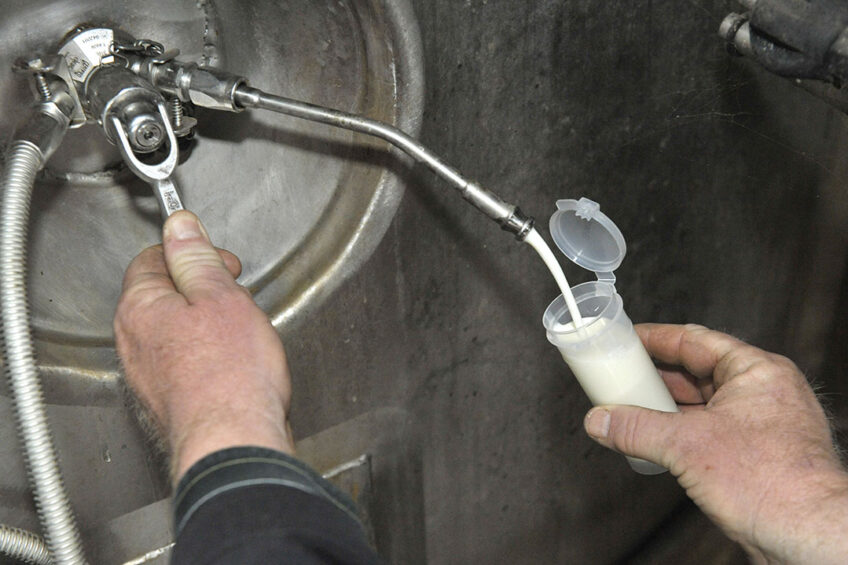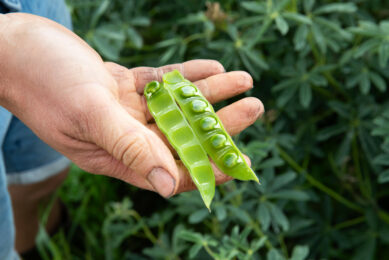Feeding field beans: Watch the milk quality

Dairy farmers considering using field beans as a source of protein in the diet for their cows should be cautious about them reducing milk quality.
With imported proteins subject to frequent price volatility farmers are looking at other raw materials to supplement cows’ diets with home grown alternatives including field beans. The main issue with feeding field beans is that while they have a moderate crude protein content, 280 g/kg dry matter, they also have a relatively high starch content, 400g/kg dry matter. However, the inclusion of field beans in ruminant diets is normally restricted due to the perceived risk associated with ‘anti-nutritional substances’ that have the potential to reduce intakes and digestibility, and oestrogenic compounds that could adversely impact fertility.

Adding higher amounts of field beans
Researchers at Northern Ireland’s Agri-Food and Biosciences Institute (AFBI) have completed trials including feed beans in diets and found that milk fat and milk protein contents were reduced when using over 8 kg of beans in the diet per day. Previous research work at AFBI included feeding 4.7 kg of field beans per day in the diet of mid lactation dairy cows and no adverse effects on performance were found. This represented a moderate inclusion rate, but the scientists wanted to look at how adding higher amounts of field beans in the diet of freshly calved dairy cows would affect the milk. AFBI set up a group of 70 early lactation dairy cows and fed a mixed ration of silage and concentrates, approximately 45:55 on a dry matter ratio. The concentrates contained either 0%, 35% or 70% field beans, which equated to daily intakes of beans of zero, 4.2 and 8.4 kg per cow, respectively.
Over 8 kg of beans: Effect on milk quality
It was shown that in the diet containing 8.4 kg beans, the beans replaced all of the soya bean meal, rape seed meal and maize gluten. All 4 concentrates had the same crude protein content, 19.3% on a fresh basis, although starch levels were marginally higher when 8.4 kg of beans were included. Using the variety Fuego, the beans were sourced from a local farm, and dried to approximately 14% moisture content, before being milled and incorporated into the concentrates. The diets were offered to cows from calving until day 140 of lactation. As shown in Figure 1 the results clearly demonstrate that dairy cows were able to consume the diet which contained 8.4 kg beans per day with no negative effect on intakes. This suggests that the ‘anti-nutritional substances’ present in beans may not have as large an impact on intakes as previously thought.
Shortage of specific amino acids in feed
However, AFBI found that while milk yield was not significantly affected, both milk fat and milk protein contents were reduced when offering the diet containing 8.4 kg of beans, and as such, milk fat plus protein yield was also reduced. While the reduction in milk fat content can likely be attributed to the high starch intake as a result of the high bean inclusion of 8.4 kg, the reduction in milk protein content is more likely to reflect a shortage of specific amino acids in the diet. AFBI said: “For example, field beans are known to contain much lower levels of the amino acid methionine than either soya-bean meal and rapeseed meal, and methionine is known to be essential for milk protein synthesis. Thus it is speculated that the reduction in milk protein content might have been avoided if the diet containing 8.4 kg of beans had been supplemented with specific amino acids such as methionine.”
Nevertheless, the reductions in milk fat and protein content in the current experiment reduced the value of milk produced by approximately € 0.93 ($ 1.04) per cow per day. Regarding fertility performance, the inclusion of beans in the diet had no effect on days to first oestrus. However, conception rates tended to fall when the diet containing 8.4 kg of field beans was offered. While very large numbers of cows are needed to identify genuine differences in fertility performance, the trend observed causes some concern regarding the inclusion of very high levels of beans in the diets of early lactation cows. “Consequently, based on the results of the 2 studies undertaken to date, in order to manage the potential risks which field beans may present, it is recommended that field bean inclusion levels for dairy cows do not exceed 4 kg to 5 kg per cow per day,” AFBI concluded.
Join 13,000+ subscribers
Subscribe to our newsletter to stay updated about all the need-to-know content in the dairy sector, two times a week.










